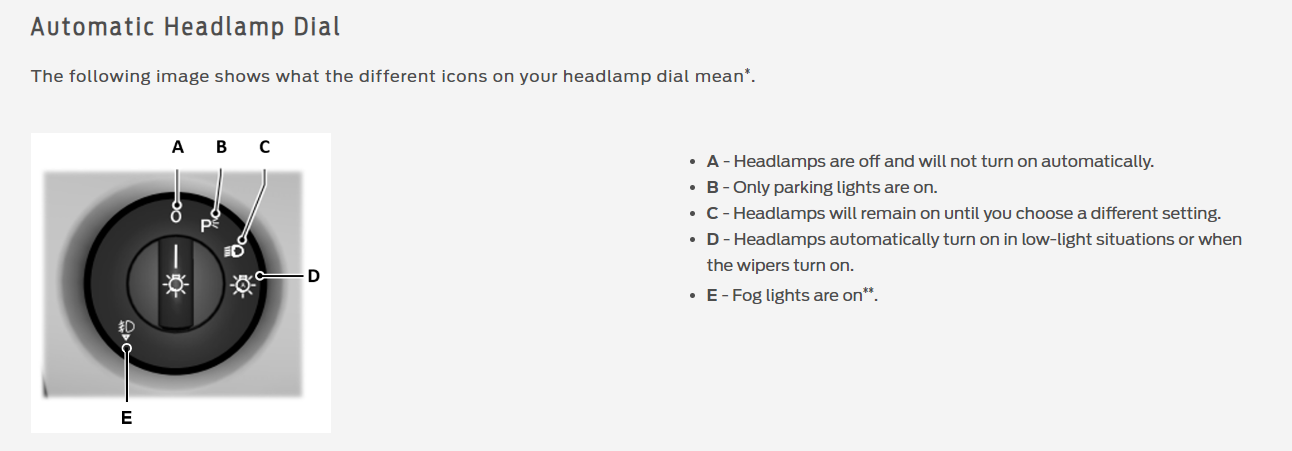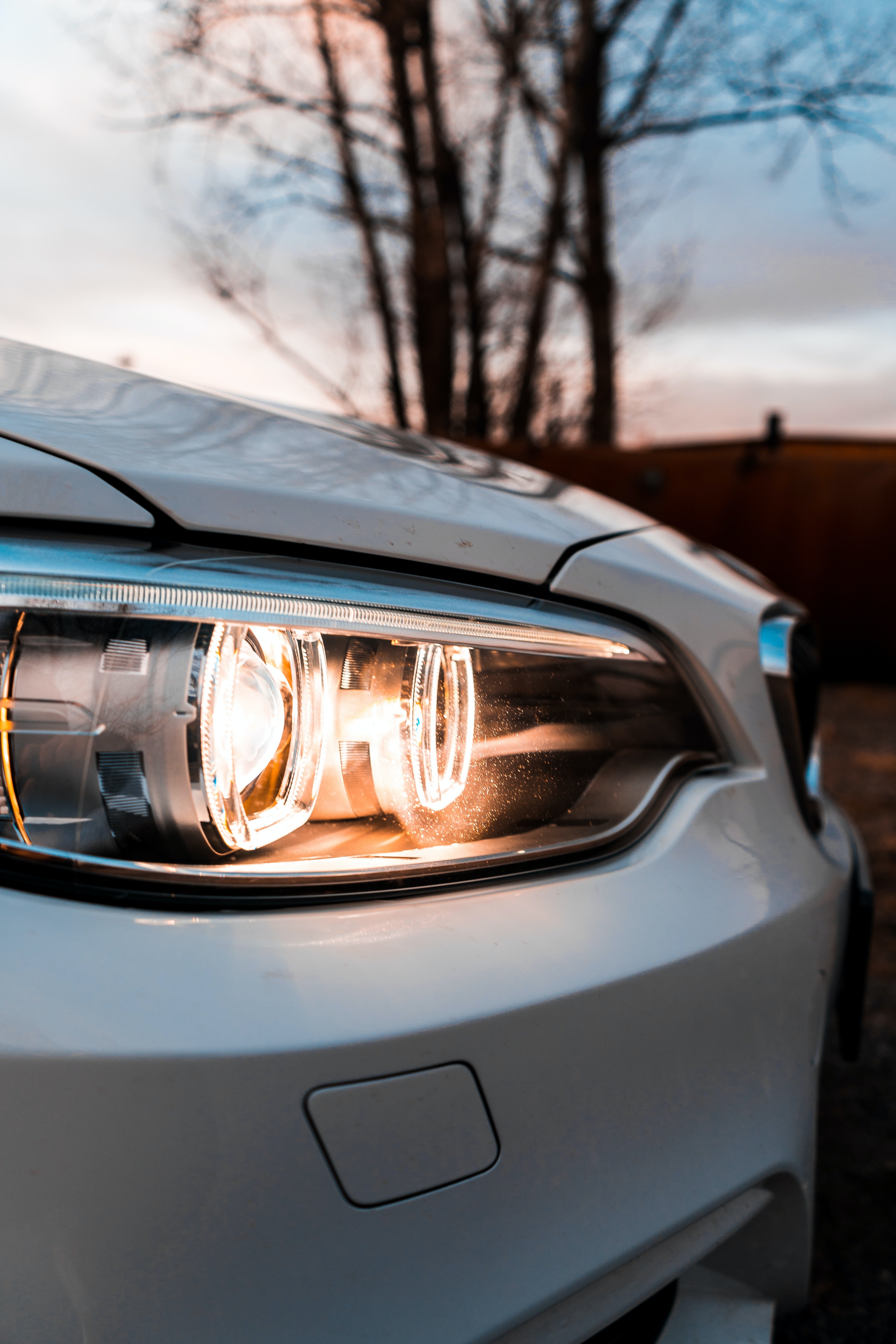Picture this: you're driving at dusk, struggling to see the road ahead. Suddenly, your car's automatic headlights kick in, lighting up the way. How do they do it? Discover the magic of automatic headlights as we explore their functionality, benefits, and even how they save energy. Get ready for an enlightening journey through the world of automotive illumination!
What Are Automatic Headlights?
Automatic headlights, or auto-on headlights, are a feature of modern cars. They turn on the headlights when it gets dark. These headlights use sensors to tell how much light is around and decide when to turn on the headlights. The main job of automatic headlights is to ensure we can see well and stay safe on the road.
Automatic headlights are important in today's cars for several reasons:
- They're convenient: Drivers don't have to remember to turn on their headlights when it gets dark with automatic headlights. The lights can turn on and off automatically based on the light.
- They help us see better: By turning on the headlights automatically, even when the driver might forget to do it, automatic headlights make it easier for the driver and other people on the road to see. This is especially important when it's getting dark, at dawn, and when the weather is bad.
- They let drivers focus on driving: Since the headlights turn on and off by themselves, drivers can pay more attention to the road and what's around them instead of having to worry about the headlights.
- They make driving safer: Having the headlights on when they need to be is important for being able to see well, especially when it's dark. Automatic headlights keep everyone on the road safe by ensuring they're always on when they should be.
How Do Automatic Headlights Work?
Automatic headlights use sensors to figure out how much light there is around. These sensors are usually found on the dashboard or windshield of a car. Sensors see how bright the light is and decide when to turn on the headlights.
When the sensors see that there isn't much light around, like at dusk or when driving through a tunnel, they tell the car's lights to turn on the headlights. This makes sure the driver can see well and that other people can see the car. On the other hand, when the sensors see a lot of light, they turn off the headlights to save energy. Driving on a road with many lights or during the day are examples. This ensures that other drivers aren't blinded by the lights.
Automatic headlights make driving easier and safer. They do this by ensuring drivers don't have to remember to turn their headlights on and off when the amount of light changes. They make sure the car is always lit up the right way based on how much light there is around. This makes it easier to see and reduces the chance of accidents.

Benefits of Automatic Headlights
Automatic headlights make it easier to see and make driving safer when it's dark or when there isn't much light. These headlights can see how much light there is around and turn on or off as needed, making sure the road ahead is lit up well. This feature means the driver doesn't have to remember to adjust the headlights. This makes it easier to focus on the road.
Drivers don't have to remember to turn on or off their headlights with automatic headlights. The system takes care of this by using sensors to see how much light there is and adjusting the headlights as needed. This lets the driver focus on driving without having to worry about the headlights.
Different Types of Automatic Headlight Systems
Several types of automatic headlight systems are often found in modern cars. These systems are designed to make it easier to see and drive safely. Here are some of the different types of automatic headlight systems:
- Light-sensitive sensor-based systems: This type of system uses light sensors to see how much light there is. They adjust the headlights based on that. Headlights turn on automatically when it gets dark outside. They'll turn off when it gets brighter.
- Rain-sensitive sensor-based systems: Rain-sensitive sensor-based systems use sensors to see if there's rain or moisture on the windshield. When it starts raining, the headlights will automatically turn on. This makes it easier to see in wet conditions.
- Adaptive headlight systems: Adaptive headlight systems use sensors and motors to change the direction and brightness of the headlights. This is based on how the car is being driven. These systems can move the headlights in the direction the car is turning. You can see around corners easier this way.

Common Features and Options
When it comes to automatic headlights, there are several common features and options that you might find:
Adjustable sensitivity settings
Automatic headlights often let you change how sensitive the headlights are to changes in light. You can make them more or less responsive depending on what you prefer.
Automatic headlight delay
Some cars have a feature that keeps the lights on for a little while after the car is turned off. This can be helpful when getting out of your car at night. You can see where you're going because it gives you enough light.
Auto-high beam assist
Auto-high beam assist is a feature that automatically switches between low beams and high beams based on what's around. It uses sensors to see other cars' headlights and adjusts the headlights as needed. This can make it easier to see when driving at night without bothering other drivers.
Automatic Headlights and Energy Efficiency
Automatic headlights are a feature in modern cars that automatically turn on and off the headlights based on how much light there is around. This not only makes it easier for the driver but also helps save energy. The automatic headlights make sure that the headlights are only used when they need to be, reducing unnecessary energy use during the day or in well-lit areas. This can help save energy in cars and help the battery last longer.
Automatic headlights are often used with other features in cars that save energy, like automatic dimming mirrors and adaptive lighting systems. These features work together to use energy in the best way and improve overall efficiency. For example, the automatic dimming mirrors reduce the glare from the headlights of other cars, reducing the need for high beams and saving energy. Similarly, adaptive lighting systems change the direction and brightness of the headlights based on the road and how the car is being driven, making the lights even more efficient.
Automatic Headlights and Legal Requirements
When it comes to using automatic headlights, there are specific laws that are different in each country. Generally, these laws are there to make sure drivers and people walking on the road are safe. Here are a few things to keep in mind:
- In some places, it's required for cars to have automatic headlights that turn on when it's hard to see. Examples are rain, fog, or dusk.
- A lot of countries require daytime running lights (DRLs) to turn on when the car starts. This is to make the car easier to see during the day.
- Some places have laws requiring cars to have automatic headlights that turn on when the windshield wipers are used. This is to make it easier to see during bad weather.
It's important to know your country's or state's specific laws about using automatic headlights. This information can usually be found in your car's owner's manual or by asking local authorities.
Automatic headlights on cars have to meet certain safety standards and certifications to make sure they work the right way. These standards and certifications are different depending on the country and region. Manufacturers must follow these requirements to ensure their cars meet the necessary safety standards.
Choosing cars from manufacturers that care about safety and follow these standards is important. When buying a car with automatic headlights, ensure to check if the manufacturer holds the required certifications and if the headlights meet safety standards in your region. It's important to prioritize compliance and safety.

Challenges and Limitations
While automatic headlights are designed to make driving easier and safer, they can sometimes have problems. Here are some common issues that users might run into:
- False activations: Automatic headlights might sometimes turn on or off when they shouldn't because the sensors aren't working right or there isn't enough light. This can be annoying and potentially distracting for drivers.
- Malfunctions: Sometimes, the automatic headlight system might have technical problems like sensor failure or electrical problems. This can make the headlights not work the way they should, and they might need to be fixed or replaced.
Automatic headlights might not work as well in certain situations:
- Bright sunlight: Automatic headlights might have trouble turning on during bright sunlight, as the sensors might not see the need for headlights. This can make it hard for drivers to make sure other people can see their car.
- Low visibility conditions: While automatic headlights are designed to turn on when it's dark, they might not work as well in heavy fog, rain, or snow. In these situations, it's important for drivers to turn on their headlights themselves to make sure they can see well.
It's important for users to know about these problems and limits with automatic headlights and to always pay attention to what's around them while driving, no matter how the automatic headlight system is working.

Frequently Asked Questions about Automatic Headlights
Here are some common questions about automatic headlights:
What are automatic headlights?
Automatic headlights are a feature in modern cars that can turn on and off the headlights by themselves based on how much light there is around. They use light sensors to see how much light there is and turn on the headlights when it gets dark enough.
How do automatic headlights work?
Automatic headlights use light sensors, usually found on the dashboard or the rearview mirror, to see how much light there is outside. When the sensors see that the light has gotten low enough, the headlights are automatically turned on. On the other hand, they will turn off when there's enough light.
Can I manually control the automatic headlights?
In most cars, there's an option that lets drivers control the headlights themselves. This can be helpful in situations where the automatic system might not turn the lights on or off the right way, like driving through a tunnel or in heavy rain where the sensors might not work right.
Do automatic headlights make driving safer?
Yes, automatic headlights can make driving safer by making sure the car is always easy to see for other drivers, especially when it's dark. They make sure the driver doesn't have to remember to turn on the headlights, reducing the risk of driving without being able to see well.
Do automatic headlights use up more battery?
Automatic headlights use a small amount of power as they usually use energy-efficient LED bulbs. The sensors and control module are designed to work efficiently without using up a lot of the car's battery.
It's important to remember that the specific features and how automatic headlights work might be different between car models and manufacturers. For more detailed information, it's a good idea to look at the car's owner's manual or the manufacturer's website.
Conclusion
In conclusion, automatic headlights are a helpful and practical feature that can make driving safer and easier. Here's a summary of the benefits, features, and things to think about with automatic headlights:
Benefits:
- Better visibility: Automatic headlights ensure your car's lights are always on when needed. This makes it easier for you and other drivers to see.
- Convenience: Automatic headlights don't require you to remember to turn them on and off. They adjust themselves based on the amount of light present, ensuring convenience and hassle-free operation.
- Safety: By ensuring your car's lights are always on, automatic headlights make your car easier to see for other drivers. This helps reduce the chance of accidents.
Features:
- Light sensors: Automatic headlights use sensors to see how much light there is and turn the headlights on or off as needed.
- Delayed shutoff: Some automatic headlights have a feature that keeps the lights on for a little while after the car is turned off. This gives you light while you get out of the car.
- Adaptive lighting: Some advanced automatic headlights can change the direction and brightness of the light based on how the car is being driven and the road conditions.
Things to think about:
- Manual control: It's important to be able to control the headlights yourself if needed. This is especially true when the automatic system might not turn the lights on or off correctly.
- Maintenance: Like any other feature in a car, automatic headlights might need to be checked or fixed once in a while to make sure they work right.
Overall, automatic headlights make driving safer and easier. It's a good idea to check out this feature when buying a new car or adding it to your current car.
Got Questions? We're Here to Help!
Do you have questions about all these cool car features? No worries! Our friendly team is ready to help you.
And hey, while you're here, why not check out more of the Better Automotive Lighting Blog? We've got lots of cool stuff about car lights.
Plus, we just started a new Facebook page. Come by, leave a comment, and hit that 'Like' button to let us know what you think. We can't wait to hear from you!






.png?width=300&height=87&name=logo%20(1).png)